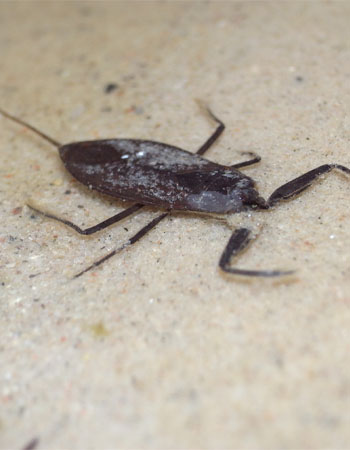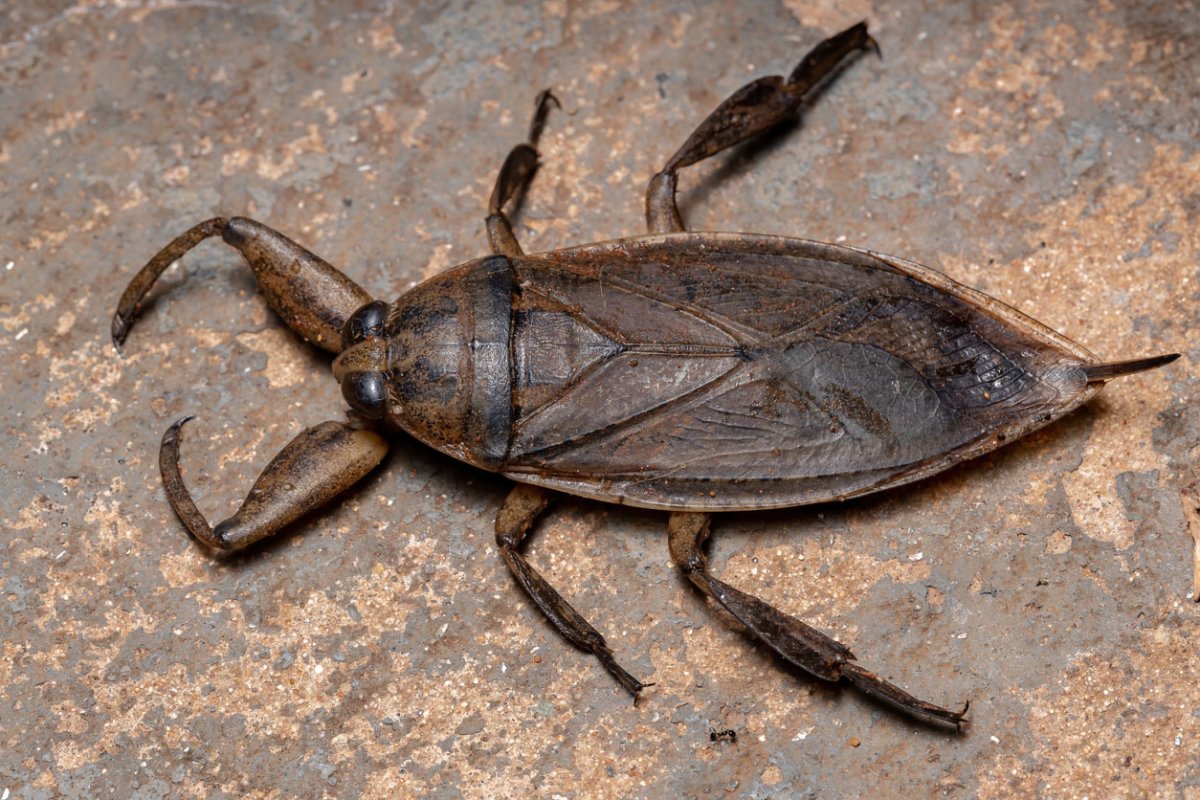We may earn revenue from the products available on this page and participate in affiliate programs. Learn More ›
Q: Every time I go outside to take a swim, I see tons of water bugs in my pool. What are they, and what attracts them to the pool? And how do I get rid of them and keep them from coming back?
A: Water bugs in the pool, whether they’re black water bugs or pool mites, definitely take the relaxation out of what should be a stress-free swim in the backyard. Although water bug bites are uncommon and the bugs themselves aren’t usually harmful to humans, they are still a nuisance that need to be dealt with. Regardless of the species, the best water bug killer is regular cleaning and pool maintenance (whether you DIY it or hire a professional), which should be done on a weekly basis for best results. No matter what types of water bugs are present, you can rest assured they’ll be gone in no time if you follow the steps in the guide below.
There are several types of bugs that can take up residence in a swimming pool.

Depending on where you live, there are likely to be any number of pool bugs floating or swimming around the body of water in the backyard. The most common types of bugs to find in a pool are:
- Mosquitoes: Because they’re attracted to and lay eggs in stagnant water, it’s common to find them near a pool.
- Water boatman: These oval-shaped insects swim and glide on the surface of water, and they can actually be beneficial since they feed on algae and other organisms.
- Backswimmers: Although they can bite, backswimmers aren’t considered harmful to humans. As their name suggests, they swim on their backs and are strong predators of small bugs.
- Giant water bugs: Several inches long, giant water bugs have flattened, oval-shaped bodies with strong forelimbs used to catch prey. They feed on insects, small fish, and tadpoles, and they are not typically aggressive toward humans.
These bugs are typically attracted to a pool because it provides a food source.
Big and small water bugs alike are drawn to pools because that’s where their food source is. White algae in the pool is a primary food source for aquatic insects and is often found in backyard pools. Other food sources water bugs are attracted to include decaying leaves, organic debris, small insects and organisms found in water, and in some cases, even bugs of their own species. Since all of the above can be found in a pool, it makes for an ideal snacking station.
Homeowners will need to clean their pools and eliminate any algae to get rid of bugs.
The good news is that getting rid of water bugs isn’t a particularly pricey or cumbersome task. All it takes is regular cleaning and maintenance of the pool to ensure the bugs no longer have anything to feed on. Vacuuming the pool floor, cleaning the walls and filtration system, and removing any debris from the surface of the water are all important tasks that should be done on a weekly basis to get rid of swimming bugs in the pool. One of the best pool cleaning services can also handle these tasks if a homeowner doesn’t know how to maintain a pool or struggles to stay on top of the cleaning schedule.
The need for maintenance is true whether you are dealing with inground or above-ground pool maintenance. If a pool isn’t kept covered when it’s not in use, cleaning may need to be more frequent—possibly daily—especially if the backyard has a lot of trees or landscaping that produces debris.
Covering the pool when not in use and dimming lights can make the pool less inviting.
Another effective way to keep a water bug infestation at bay is to cover the pool when it’s not in use. A cover can prevent the bugs from entering the pool as well as reduce the availability of their food source. You can also try turning off lights at night, since bugs are often drawn to bright lights. If none of the above methods help, it may be worth looking into the cost of a pool screen enclosure. For pools in regions that are warm year-round and have a climate that encourages water bugs, a pool enclosure may be worth it in the long run.
Ongoing pool maintenance is important for keeping bugs out of a pool.
Besides regular cleaning, other maintenance such as testing and balancing the pH and chlorine levels and removing any standing water around the pool can help get rid of flying water bugs for good. Investing in one of the best pool shock products can also help get rid of the microorganisms that water bugs feed off, which will help control the population of the bugs in a pool. Should a homeowner feel ill-equipped to handle bugs in the pool one of the best pest control companies, such as Orkin or Terminix, can provide guidance or a solution.


